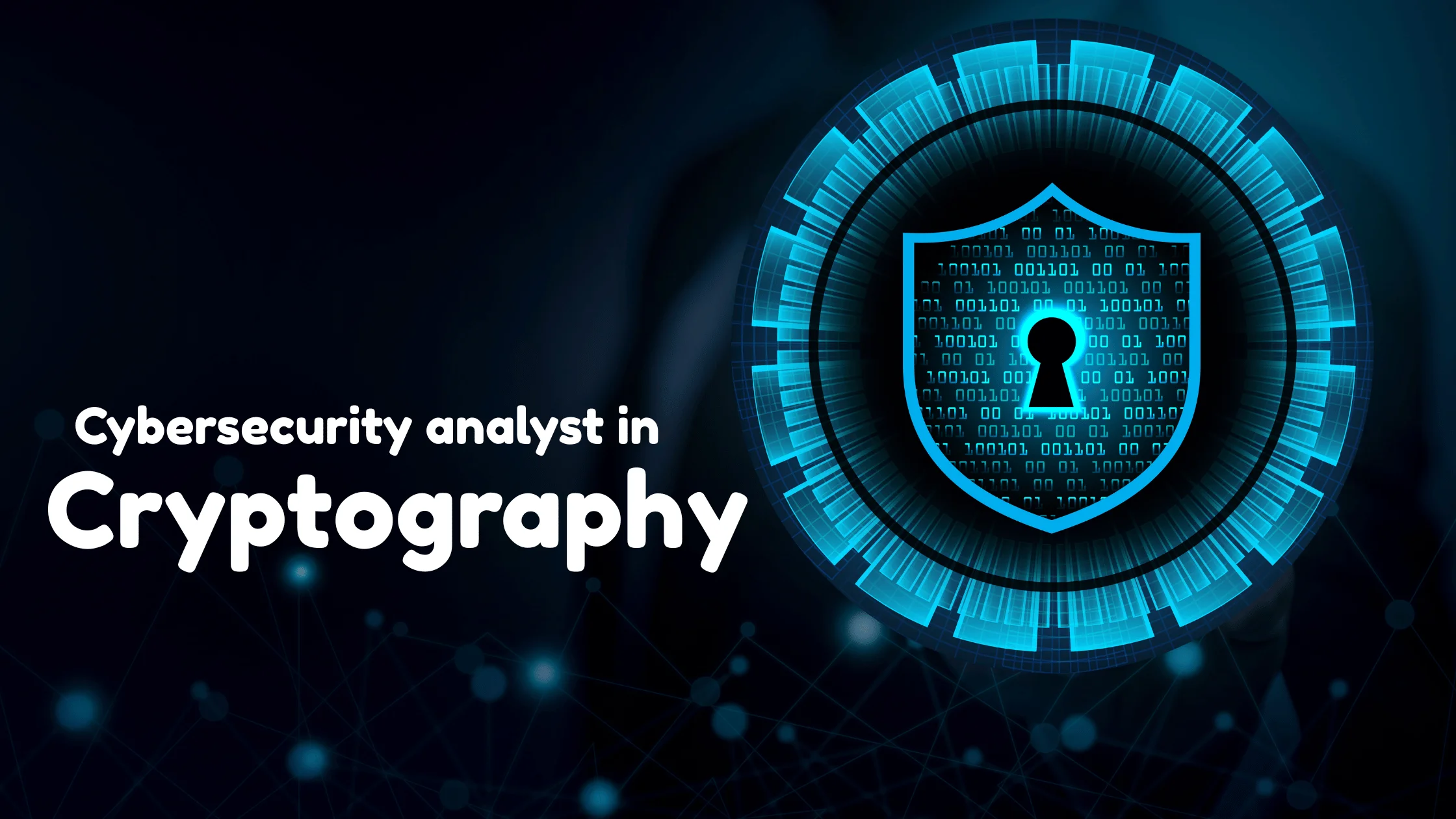What Does a Cybersecurity Analyst Do in Cryptography?
Published: 23 Jun 2025
Cryptography is the cornerstone of modern cybersecurity, encoding information so that only authorized parties can read it.

At the intersection of cryptography and cybersecurity, a cybersecurity analyst plays a critical role in safeguarding digital assets through the design, implementation, and monitoring of cryptographic protocols.
This article breaks down the responsibilities, tools, and strategic importance of cybersecurity analysts working with cryptography.
1. Understanding the Analyst’s Cryptographic Focus
Cybersecurity analysts are not always cryptographers, but they bridge the gap between theoretical encryption models and real-world security applications. Their cryptographic responsibilities center around:
- Implementing secure encryption protocols across applications, networks, and databases.
- Evaluating cryptographic algorithms (e.g., AES, RSA, ECC) for compliance and strength.
- Ensuring key management practices meet industry standards.
- Responding to cryptographic failures such as deprecated cipher suites or exposed private keys.
2. Core Responsibilities in Cryptographic Security
a. Cryptographic Risk Assessments
Analysts perform risk assessments to identify vulnerabilities in systems using cryptography. This includes:
- Verifying whether encryption protocols (e.g., TLS, IPsec) are correctly implemented.
- Evaluating susceptibility to known attacks like Padding Oracle, BEAST, or side-channel exploits.
- Ensuring that cryptographic components adhere to frameworks such as NIST guidelines or ISO/IEC 27001.
b. Key Lifecycle Management
A large part of securing cryptographic systems lies in managing keys properly. Analysts:
- Monitor key generation, distribution, rotation, revocation, and destruction.
- Detect anomalies in key usage to prevent insider threats or misuse.
- Use Hardware Security Modules (HSMs) or Key Management Systems (KMS) for control and auditing.
c. Incident Response for Cryptographic Breaches
When encryption-based defenses are bypassed, the analyst must:
- Contain and investigate the breach vector (e.g., stolen certificates, forged tokens).
- Analyze logs and packet captures to detect cryptographic misuse.
- Coordinate with cryptographers and developers for mitigation and patch deployment.
d. Cryptographic Compliance & Governance
Cybersecurity analysts ensure that encryption practices align with legal and regulatory frameworks such as:
- GDPR, HIPAA, and PCI-DSS for data privacy and encryption requirements.
- FIPS 140-3 standards for cryptographic module validation.
- Auditing cryptographic libraries in use across systems.
3. Tools and Technologies Used
Analysts use a combination of tools to support cryptographic assurance:
| Category | Tools / Technologies |
|---|---|
| Protocol Analysis | Wireshark, OpenSSL, Zeek |
| Key Management | AWS KMS, Azure Key Vault, Thales HSM |
| Vulnerability Scanning | Nessus, Qualys, CryptCheck |
| Secure Coding Tools | Veracode, Checkmarx, SonarQube |
| Compliance Auditing | SCAP tools, LogRhythm, Splunk |
4. Strategic Contributions to Organizational Security
Cybersecurity analysts bring cryptographic strategy into larger business contexts by:
- Advising development teams on cryptographically secure design patterns.
- Collaborating with cryptographers and engineers to evaluate post-quantum readiness.
- Educating stakeholders on encryption significance and implementation impact.
- Contributing to threat modeling with an emphasis on cryptographic misuse.
5. The Analyst’s Role in Emerging Cryptographic Challenges
As digital infrastructure evolves, analysts must address cutting-edge developments like:
- Quantum computing threatens classical encryption (e.g., Shor’s algorithm).
- Zero-trust architectures, where encryption is pervasive and adaptive.
- Blockchain and distributed ledger technologies require strong cryptographic consensus.
- Homomorphic encryption and multi-party computation in privacy-preserving analytics.
Conclusion
The cybersecurity analyst is a sentinel of cryptographic integrity, ensuring that complex algorithms are properly wielded to protect data confidentiality, integrity, and authenticity. Far from being mere users of encryption, analysts actively shape how cryptography is applied across digital ecosystems. Their blend of technical insight, strategic alignment, and security awareness positions them as indispensable actors in the fight against digital threats.

- Be Respectful
- Stay Relevant
- Stay Positive
- True Feedback
- Encourage Discussion
- Avoid Spamming
- No Fake News
- Don't Copy-Paste
- No Personal Attacks

- Be Respectful
- Stay Relevant
- Stay Positive
- True Feedback
- Encourage Discussion
- Avoid Spamming
- No Fake News
- Don't Copy-Paste
- No Personal Attacks





